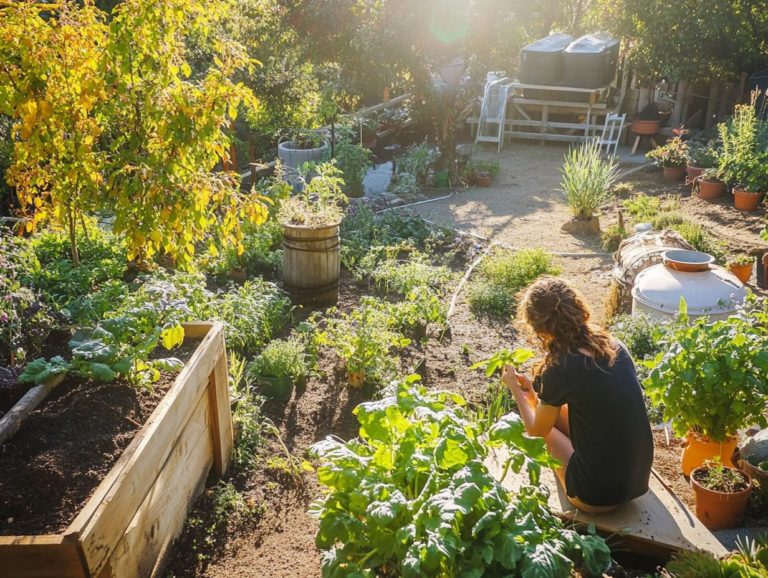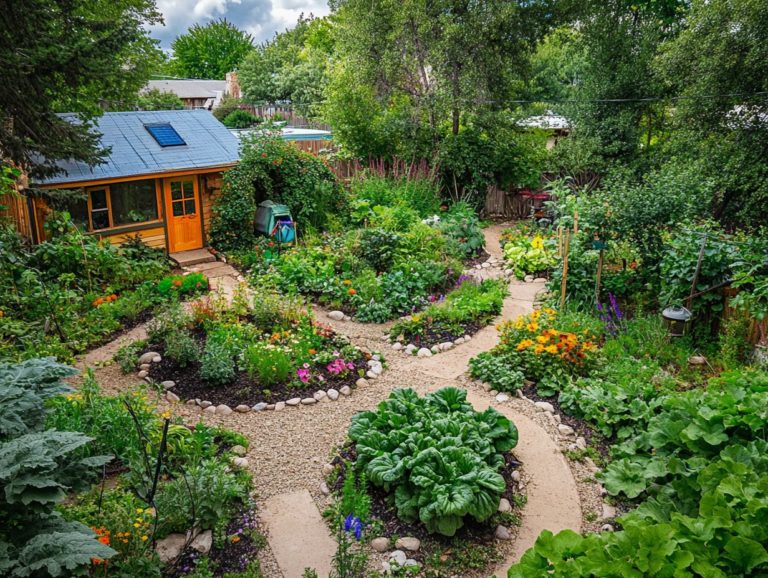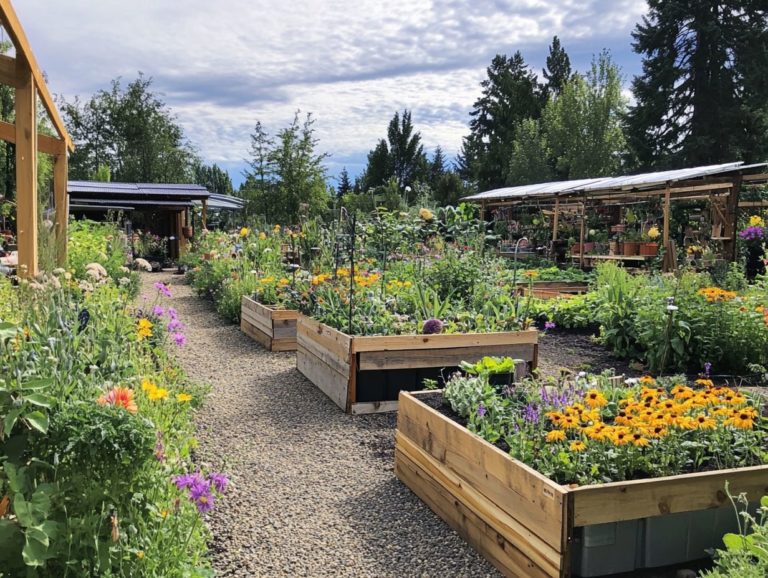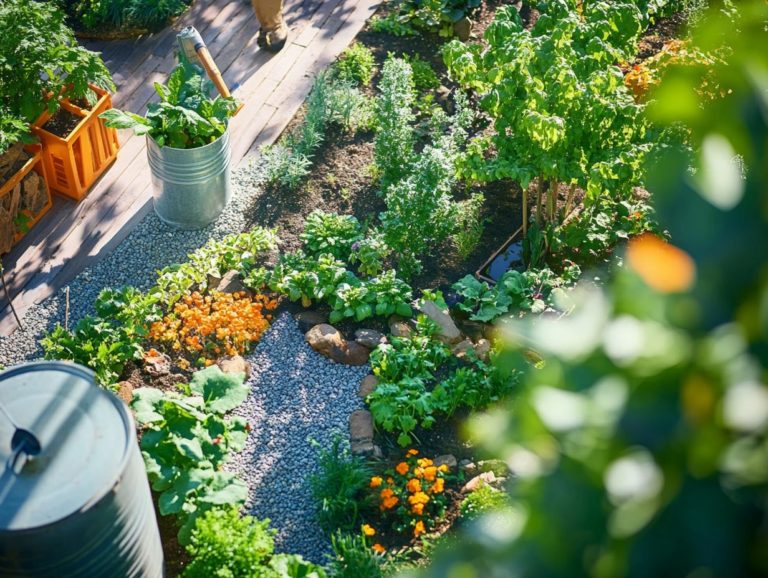How Do I Start a Community Permaculture Project?
Permaculture presents a sustainable approach to designing communities, seamlessly integrating ecological principles with human needs.
This exploration delves into the essence of permaculture and its foundational principles, showcasing the myriad benefits that community projects can offer environmentally, socially, and economically.
Whether you re contemplating launching a community initiative or are simply intrigued by the process, this guide will navigate you through essential steps, address common challenges, and share inspiring success stories that illustrate the transformative power of community permaculture.
Contents
- Key Takeaways:
- Understanding Permaculture
- Benefits of Community Permaculture Projects
- Steps to Starting a Community Permaculture Project
- Challenges and Solutions for Community Permaculture Projects
- Success Stories of Community Permaculture Projects
- Frequently Asked Questions
- Starting Your Community Permaculture Project Made Easy!
- What are the benefits of starting a community permaculture project?
- Do I need any prior knowledge or experience to start a permaculture project?
- How can I find a suitable location for a community permaculture project?
- What are some key considerations when planning a community permaculture project?
- How can I get the community involved and engaged in the permaculture project?
Key Takeaways:
- Understand the principles of permaculture and how they can benefit your community.
- Identify goals, gather resources, and plan your community permaculture project.
- Overcome challenges and learn from successes to ensure your project’s success.
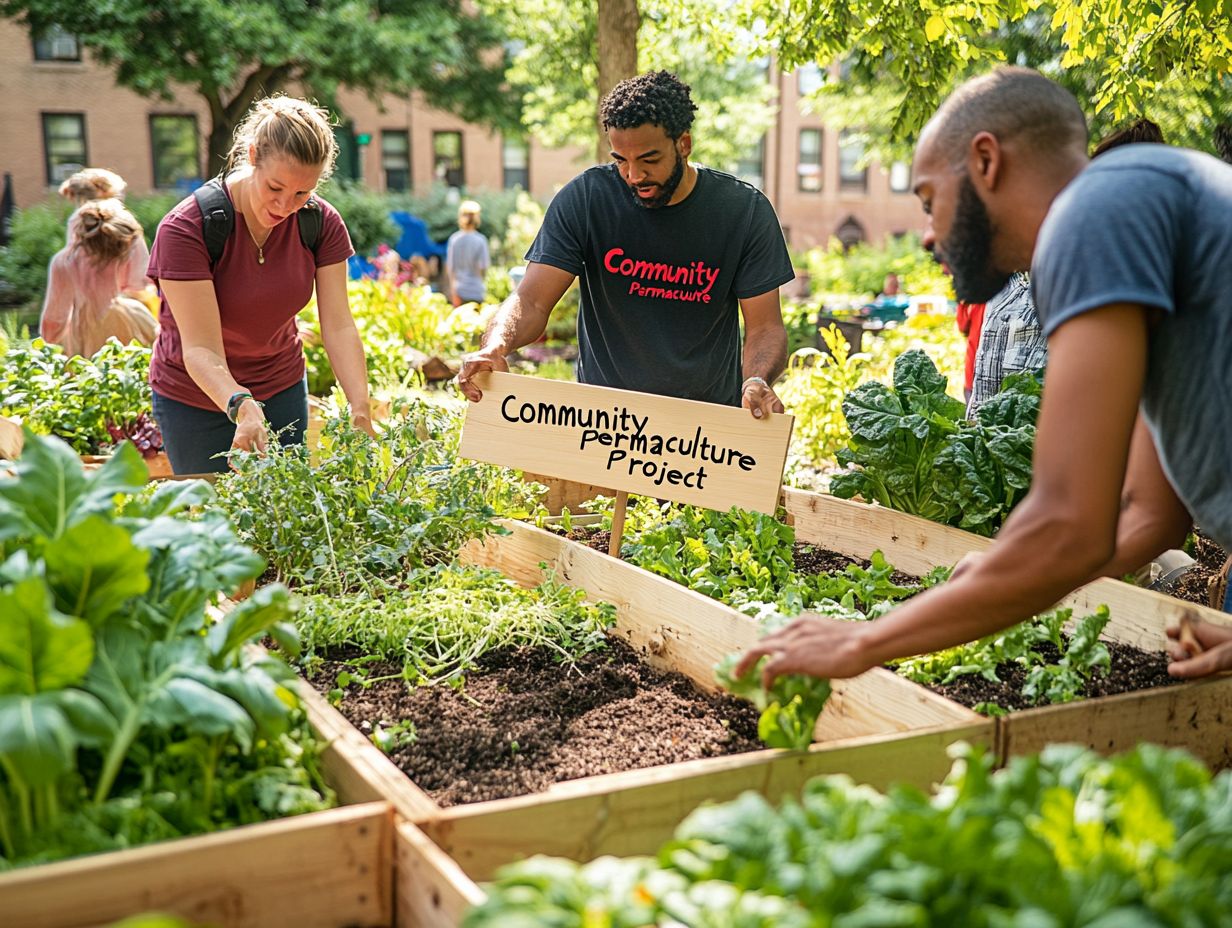
Understanding Permaculture
Understanding permaculture is essential for cultivating sustainable societies that respect indigenous cultures and embrace ecological design principles. This exciting approach provides a fresh, holistic perspective on land use and community development by integrating systems that are both ecologically sound and economically viable.
By doing this, it enhances community design while fostering a participatory culture. This methodology goes beyond just agricultural efficiency; it also tackles broader environmental concerns by promoting resilience and environmental awareness among community members.
What is Permaculture and its Principles?
Permaculture is an integrated system designed to shape human settlements and agricultural practices, inspired by the intricate relationships found in natural ecosystems. At its core, it emphasizes principles such as care for the earth, care for people, and fair share.
Embracing these fundamental principles helps cultivate sustainable environments where resources are shared equitably. For example, prioritizing care for the earth encourages the adoption of organic farming methods that enhance soil health. The principle of care for people underscores the importance of community engagement and social equity in decision-making processes.
A thriving local food network not only bolsters agricultural efforts but also nurtures connections among residents. The principle of fair share ensures that resources are distributed responsibly, granting everyone access to the advantages of local initiatives, including community gardens and natural building projects that leverage local materials and skills.
Benefits of Community Permaculture Projects
Community permaculture projects present a wealth of advantages that extend beyond environmental enhancement. They provide social and economic improvements that tackle pressing social issues, cultivating a strong sense of collective ownership and responsibility among community members.
Engaging in these initiatives not only enriches the local ecosystem but also strengthens the bonds within the community, creating a thriving network of support and collaboration.
Ready to transform your community? Start your permaculture project today!
Environmental, Social, and Economic Benefits
The environmental, social, and economic benefits of community permaculture are intricately linked, forming a holistic model for sustainable living that enhances your connection to the environment. This approach fosters civic engagement and promotes economic sustainability.
By embracing permaculture principles, you can actively combat pressing environmental challenges like soil degradation and water scarcity. Adopting organic gardening practices enhances soil health while boosting biodiversity, leading to vibrant ecosystems. This sustainable approach significantly reduces your carbon footprint.
On the social front, community permaculture initiatives strengthen bonds among residents. They encourage collaboration through shared gardening projects and local workshops. This surge in civic participation enriches community spirit and equips individuals with valuable skills.
Economically, these initiatives can pave the way for job creation in local agriculture. They nurture micro-enterprises that contribute to regional economies and bolster food sovereignty, ensuring that your community thrives independently.
Steps to Starting a Community Permaculture Project
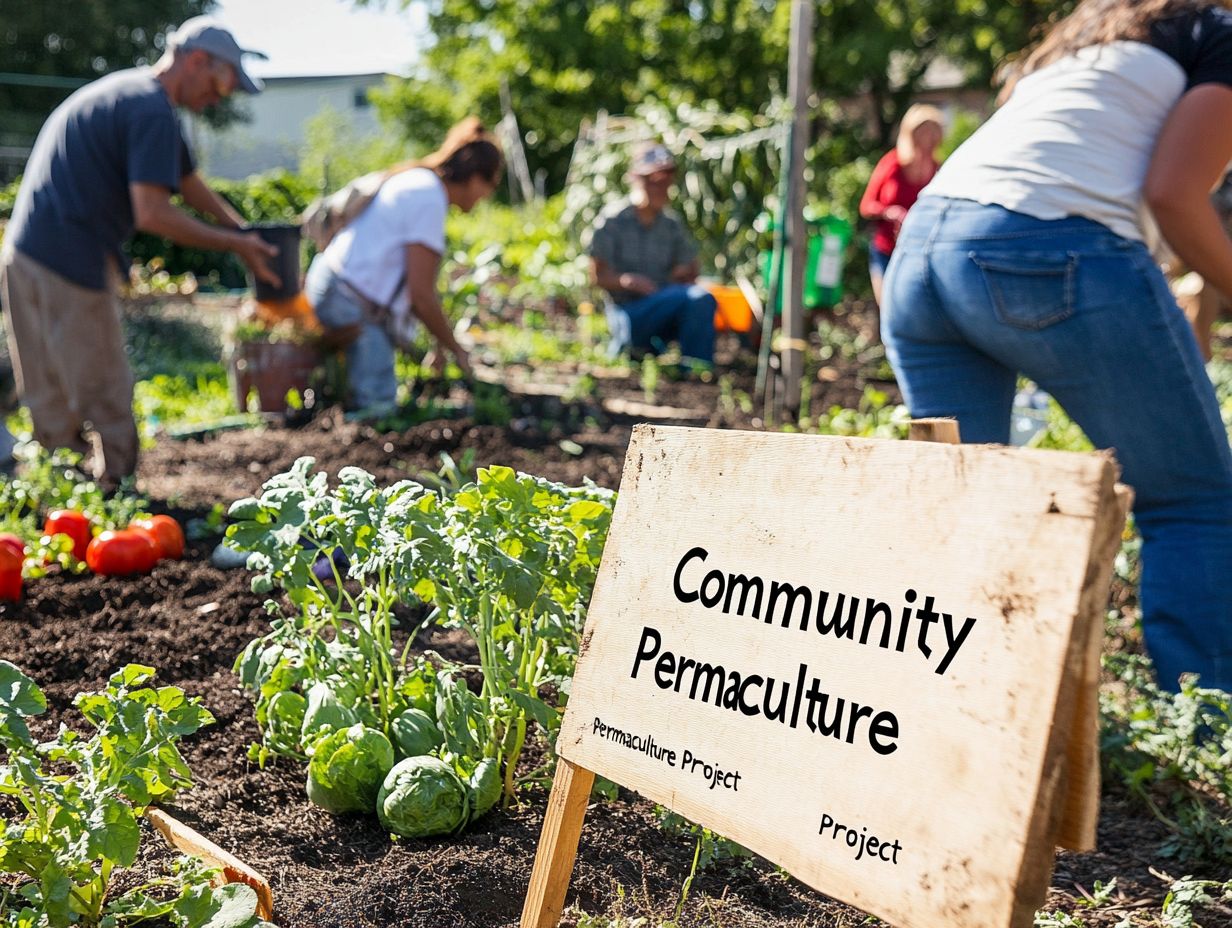
Kickstarting your community permaculture project is an exciting journey! Let’s explore the essential steps. By harnessing local resources, you can lay a strong foundation for effective planning and learn how to foster a culture of permaculture in your community.
Engage your community through thoughtful outreach efforts and fundraising initiatives. This ensures that everyone feels involved and invested in the journey ahead.
Identifying Goals and Resources
Identifying clear project goals and assessing available resources is crucial for the success of any community permaculture initiative. This maximizes community involvement and aligns the planning structure with the needs of local inhabitants.
By setting specific, measurable objectives from the outset, you can chart a focused pathway. This enhances the project’s efficiency and actively engages local participation. Involving community members from the start cultivates a sense of ownership.
A thorough resource assessment allows for the strategic allocation of tools and finances. Incorporating design strategies that resonate with local values enables effective collaboration. A well-structured planning and design approach serves as the backbone of sustainable projects.
This facilitates holistic community development and ensures long-term benefits for all involved.
Forming a Group and Creating a Plan
Forming a cohesive group and crafting a well-structured plan are vital elements in launching a community permaculture project. To enhance your efforts, consider exploring how to engage with local permaculture initiatives, which promotes participatory design and fosters effective community building.
Gather individuals who are genuinely interested, ensuring that each person feels welcomed and valued. Begin discussions by focusing on shared goals and the diverse skills participants bring, allowing everyone to contribute meaningfully from the start.
As ideas flow, outline specific roles and responsibilities. This fosters accountability and enhances collaboration. Consider incorporating tools like communal brainstorming sessions and feedback loops to refine the project plan, ensuring it reflects the community s vision.
This cooperative approach strengthens relationships among participants and instills a sense of ownership. It makes the project more sustainable and enriching for everyone involved.
Implementing and Maintaining the Project
Implementing and maintaining a community permaculture project requires your commitment. To enhance your efforts, consider building a network of permaculture supporters while following sound gardening principles and effective maintenance strategies to foster engagement and benefits for all.
A key element in this journey is the establishment of clear roles and responsibilities among community members, nurturing a sense of ownership and collaboration. Hosting regular workshops and hands-on sessions will enhance individual skills and strengthen the bonds among participants, ensuring they remain actively involved.
By emphasizing the significance of variety of plants and animals, native planting, and sustainable practices, you can greatly enhance the health of the ecosystem and contribute to the project’s overall success. Creating designated areas for communal gatherings reinforces community ties, fostering collaborative decision-making and shared experiences that encourage ongoing participation.
Challenges and Solutions for Community Permaculture Projects
Community permaculture projects often face challenges from how people work together. However, by implementing effective solutions, these initiatives can showcase remarkable resilience and adaptability, particularly during community design charrettes.
Common Challenges and How to Overcome Them
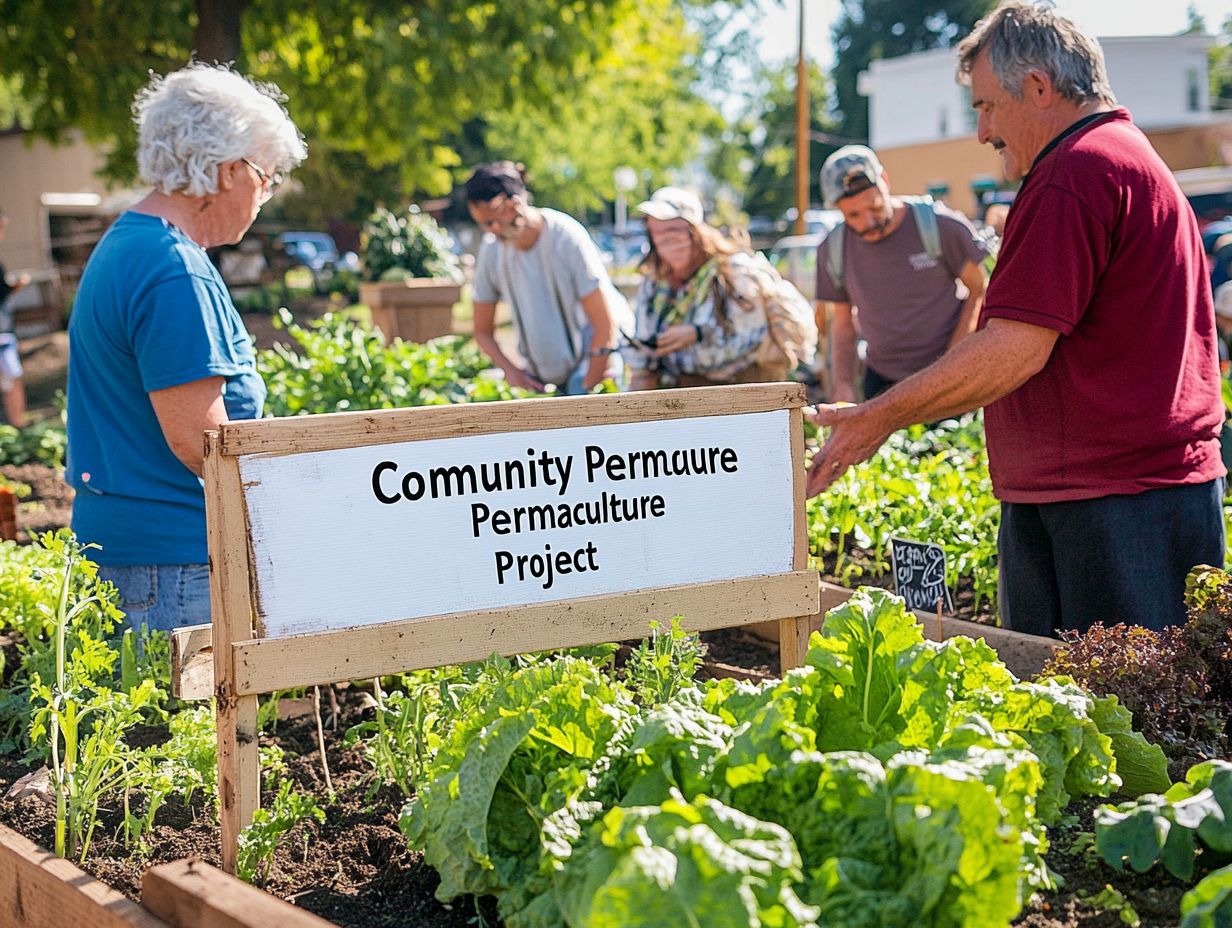
Common challenges in community permaculture projects often revolve around barriers to community involvement and the necessity for effective planning architecture that bolsters social permaculture initiatives.
You might encounter obstacles such as a lack of awareness, limited resources, and insufficient skills among participants. To tackle these issues, consider initiating educational workshops that focus on sustainable practices, enabling local participants in the process.
Crafting a robust outreach strategy that connects with diverse demographics ensures that various voices are heard and actively engaged. Incorporating an adaptable planning architecture with feedback mechanisms will enable you to address community needs more effectively.
By fostering collaboration between local organizations and residents, your community permaculture efforts can flourish and enhance social cohesion, turning sustainability into a shared aspiration while respecting indigenous cultures and their values.
Success Stories of Community Permaculture Projects
Success stories of community permaculture projects are everywhere, offering inspiring examples that illustrate effective community design, flourishing urban gardens, and groundbreaking public space initiatives that enhance connections within the community and advance urban permaculture efforts.
Inspiring Examples of Successful Projects
Inspiring examples of successful community permaculture projects reveal the transformative power of community amenities, effective outreach efforts, and innovative fundraising initiatives designed to create meaningful change while integrating participatory design principles into the process.
Take, for instance, the Green Haven Community Garden. This remarkable project turned a vacant lot into a lush, vibrant green space, uniting neighbors through engaging workshops and seasonal harvest events that promote design principles rooted in community involvement. Their outreach initiatives, including weekly farmers’ markets and partnerships with local schools, attract a diverse audience, cultivating a culture rooted in sustainability and collaboration, enhancing civic engagement within the community.
Similarly, the Urban Oasis initiative demonstrates how strategic fundraising, paired with sponsorships from local businesses, paved the way for educational programs centered on organic gardening and educational training in sustainable practices. These initiatives showcase the effective utilization of community resources and emphasize the essential role of inclusive outreach and collective ownership in fostering a sense of belonging and environmental stewardship.
Frequently Asked Questions
Starting Your Community Permaculture Project Made Easy!
Gather a group of people who care about sustainable living. This can include friends, neighbors, or anyone who shares your passion.
What are the benefits of starting a community permaculture project?
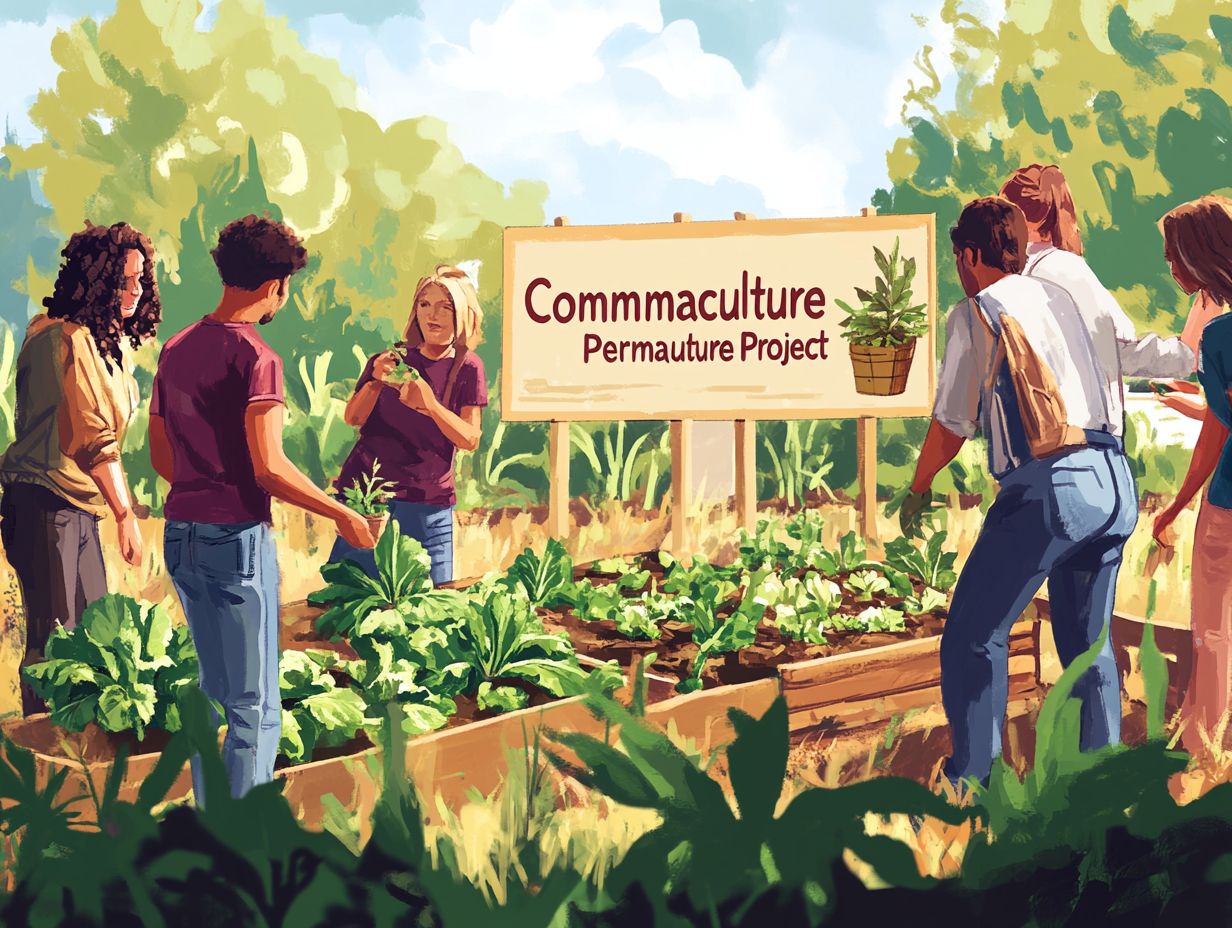
Community permaculture projects create stronger ties and promote sustainable practices. They also improve the local environment and lower carbon footprints.
Do I need any prior knowledge or experience to start a permaculture project?
You don t need prior knowledge to start. Permaculture is a journey of learning, and many resources like workshops and books are available.
How can I find a suitable location for a community permaculture project?
Reach out to local organizations about land for your project. Look for public spaces suitable for urban gardens.
What are some key considerations when planning a community permaculture project?
When planning, consider the project’s size, your resources, community needs, and sustainability, especially for disaster response.
How can I get the community involved and engaged in the permaculture project?
Engage your community by hosting workshops and events. Highlight the benefits and encourage participation in the planning and implementation process.

